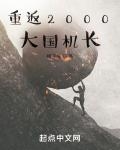Chapter 349: A Fantastic Start in 2016
Monday, January 4, 2016, was the first trading day of the new year and also the first trading day after the circuit breaker rules were officially implemented.
Before the circuit breaker was officially implemented, the investment market generally interpreted this rule as a positive, believing that with the restrictions of rules and regulations, A-shares would become more standardized.
The stock market crash after June 2015 has really scared the entire investment market. Both institutional and individual investors are still worried about the stock market crash.
Gu Junhao also thought so in his previous life. He believed that with the 5% and 7% decline limits, the probability of a stock market crash this year should be small .
But it is obvious that the entire market has ignored human nature, or some people have deliberately ignored human nature. We are the world leader in utilizing human nature.
This is especially true in cold-blooded capital transactions, where all kinds of inhumane incidents emerge one after another. It is difficult for young investors who think in a normal way to understand such inhumane operations.
At 9:25, the call auction ended and the Shanghai Composite Index jumped slightly downward to 3536.59 points. Even if the human factors of the circuit breaker are not taken into account, today's opening was an extremely bad opening.
Although the index opened less than three points lower than before the year, it was this downward gap that left a downward gap and officially fell below the 20-day line support level.
As mentioned in the previous article, after a period of high-level shock adjustments, if the index and individual stocks are unable to break through, they will inevitably choose to look for new support points downwards. There are no individual stocks and indexes that will always rise, and pullbacks are also an indispensable process in stock trading.
However, normal adjustments are not scary. The scariest thing is the downward gap in the high-level call auction. The downward gap in the high-level call auction often means that the main funds are determined to flee.
If he was still in the stage of individual stock trading, Gu Junhao would not hesitate to sell all his stocks at a loss when seeing such a gap at a high level, even if he was cheated out by the main funds.
For most individual stocks, when they open with a gap down from a high level, they will often experience a sharp decline during the day. After such a gap down, the stock price trend of strong stocks will often begin to gradually weaken.
The same is true for the overall market index. Although Gu Junhao knew the specific trend on the first day of the circuit breaker implementation, he was still shocked when he felt it again. In fact, everything had been foreshadowed.
Including the volatile downward trend in the second half of December and today's gap downward, the circuit breaker only accelerated and amplified the panic of the index and was exploited by certain funds.
In essence, the circuit breaker mechanism introduced by management is also implemented with the idea of allowing the stock market to develop better.
In my previous life, I ignored the trend of the index in today's morning session, thinking that I could buy at the bottom if there was a sharp drop during the day. As a result, I was buried on the road to buying at the bottom. Fortunately, my position was not high at the time, and the stock I bought at the bottom successfully doubled after being cut in half.
However, this process was still very painful, because Gu Junhao was used to medium and long-term investment. Under normal circumstances, if he was used to short-term trading, he would have cut his losses when the market was cut in half.
However, even if the price was cut in half, Gu Junhao, who had always been quite courageous, did not dare to buy at the bottom. He was really scared of the drop. In the case that his position was not high, it was better to lie down and take the path of a loser.
After the official trading started, the indexes and individual stocks that had gapped down fell without any rebound as expected. The trend at this time was still a normal adjustment, and there was no panic behavior in the market.
At 9:48, the Shanghai Composite Index fell below 3,500 points to 3,491.87 points, down 1.31% on the day, which is a normal adjustment. The 60-day lifeline still has support on the downward side. What Gu Junhao can be sure of is that there should be a lot of investors entering the market to buy at the bottom during this period of time.
In fact, if the market falls rapidly at the beginning, this kind of trend is more favorable for investors. Often at this time, most investors will quickly sell their stocks at a loss due to panic selling.
However, this seemingly normal downward adjustment, coupled with a supporting trend, is often the most deceptive. Even investors who were bearish on the stock market before the New Year may not be able to resist and buy at the bottom based on their own judgment.
After all, most stocks now fall by more than 3% and 5%. Buying at the bottom now may help you get off to a good start in 2016.
At 10 o'clock, after the Shanghai Composite Index fell below 3,490 points at 9:50, it ended its 10-minute sideways trend. Individual stocks and the index began to decline at an accelerated rate. Within 15 minutes of trading, the index fell from -1.3% to -4.03%, an astonishing rate of decline.
The Shanghai Composite Index closed at 3396.54 points. Within 45 minutes of trading in the morning, it broke through the 3500 and 3400 index levels. All daily trends were broken, and investors began to panic.
The number of stocks that hit the daily limit began to increase gradually, and it seemed that we had returned to the time period of the stock market crash in 2015. The 45-minute drop was also the largest drop in the Shanghai Composite Index since November 27.
The daily trend of the Shanghai Composite Index broke through all levels, and the weekly line fell below the 5-day and 10-day lines, facing pressure from the 20-day line. From the monthly line, the three consecutive positive trends of the monthly line have no resistance when facing pressure levels.
After that, after the Shanghai Composite Index fell below 3,400 points, in addition to the increase in the number of stocks that hit the daily limit, investment funds began to gradually withdraw from the market, and there was also a small-scale support from the weighty sectors, which provided a certain resistance.
The index rose above 3,400 points, and then began to move sideways after a drop of about 3%; however, the downward volatility continued to intensify, and by midday close, the Shanghai Composite Index fell below 3,400 points again.
The market closed at 3399.91 points at noon, down 3.94%. The ChiNext Index closed at 2562.06 points, down 5.6% on the day. The ChiNext Index was not within the scope of the circuit breaker regulations, otherwise the two markets would have triggered the first circuit breaker at 10:15.
At 10:15, the ChiNext Index fell by more than 5.6%, which means that within an hour and a half after the first intraday plunge, the volatile rebound in the Shanghai and Shenzhen stock markets had no effect.
All three major indexes ended today's early trading with a negative line. It was precisely this trend without any rebound effect within an hour and a half that made investors gradually realize the existence of risks.
"We shouldn't buy at the bottom today, right?" Cao Wenxun looked at Gu Junhao and said while having lunch. The two tradable stocks currently held are still relatively good compared to the index.
Although the liquor sector did not see a big increase in 2015, it is definitely at the top level in terms of its resistance to declines. With the index plummeting today and thousands of stocks hitting the daily limit, Maotai Liquor closed down 2% at noon and Wuliangye closed down 3.34% at noon.
From the trend point of view, the resistance is stronger than the index. However, it is precisely because of this strong resistance that Cao Wenxun believes that Gu Junhao should not buy at the bottom today.
The three major indexes are obviously unable to rebound. Such heavyweight blue-chip stocks, no matter how strong their resistance is, will adjust along with the index's further decline. This is the case when the overall market is sluggish.
"Buying at the bottom? It's still early. Let's witness the miracle in the afternoon." Gu Junhao responded with a smile.
"Mr. Gu, do you think the circuit breaker will be triggered in the afternoon?" Wu Peng asked quickly. When it comes to new things, even experienced traders like them cannot accept them as quickly as Gu Junhao who has already experienced it once.
Thinking about it this way, Gu Junhao's experience was much more bizarre than that of 99% of investors. This was already his second experience of a circuit breaker, an opportunity that might only happen once in a lifetime.
"Haha, we'll know after we take a look this afternoon."
Gu Junhao did not say much. Today's market decline exceeded 4%. With such a sluggish trend, the decline would have accelerated even without a circuit breaker. This is inevitable. It's just that this time the accelerated decline will allow for a different experience.
After the afternoon trading officially started, the Shanghai Composite Index once again accelerated its downward trend. In just one minute of trading, the index hit a new intraday low, with a drop of more than 4.3%.
As the decline approached 5%, panic on the market began to accelerate and investors began to invest with their feet. At 13:10, the Shanghai Composite Index VOTR reached 3370.79 points, with a daily decline of 4.76%.
A-shares are only 0.24% away from triggering the circuit breaker for the first time in history, and the downward decline will only require a difference of less than 10 points.
At 13:13, the Shanghai Composite Index closed at 3363.51 points, down 4.96%. However, at this time, the CSI 300 Index fell to 5% first, triggering the first circuit breaker mechanism. At this point, the Shanghai and Shenzhen Stock Exchanges issued an announcement announcing the suspension of trading for 15 minutes.
"What the hell? The stock is suspended? Is this the circuit breaker?" Wang Ruoyu said in confusion. In fact, most investors were in a confused state at this time.
The new rules were triggered so quickly when they were first launched. In fact, most investors are far from accustomed to the rules. Even most investors participating today don’t know what a circuit breaker is.
"Of course, we've witnessed a miracle, right? Haha." Gu Junhao looked at everyone and said with a smile.
During the 15-minute trading suspension, investors in both markets vented their emotions about the stock market on the Internet while waiting. Comedy makers, stock analysts and big Vs frantically forwarded all kinds of news.
15 minutes is enough time to educate investors on the basic knowledge of circuit breakers. At this point, some investors have realized that circuit breakers may amplify panic. In every trading day thereafter, as long as the main funds in the market want to trigger the circuit breakers, they have enough ability to do so.
You don't need too much capital, you just need to quickly sell the heavyweight stocks at the opening. When individual stocks and indexes fall rapidly, it will inevitably trigger selling, thus forming a chain reaction, and future transactions will continue in this state.
The first day of trading in 2016, the circuit breaker mechanism and the main funds in the market, through practical actions, gave retail investors a vivid lesson on what it means to control the market and what it means to be powerless.
This time, the CSI 300 Index was the first to trigger the 5% circuit breaker mechanism, which is also a good proof that you only need to smash the stocks with high weights in the CSI 300 sector, and as for other stocks, there is no need to invest any money.
In this way, for the chips they like, the main players in the market do not even need to spend any funds to dump the market, and they can get very cheap chips under a chain reaction. For this part of the funds, the circuit breaker is simply a huge benefit.
15 minutes later, trading in the Shanghai and Shenzhen stock markets resumed. Under the panic, the index continued to fall. Countless small retail investors and some institutions began to follow suit and dumped the market. It was more obvious than in the morning. The number of stocks that hit the daily limit increased again, and another thousand stocks hit the daily limit.
At 13:34, 20 minutes after the resumption of trading, the CSI 300 Index once again fell to 7%. The second circuit breaker mechanism was triggered again, and trading in the Shanghai and Shenzhen stock markets was suspended again. However, this time the suspension will last until the close of today.
In other words, the first trading day of 2016 has come to an end. The Shanghai Composite Index closed at 3296.66 points, a drop of 6.85%, and the ChiNext Index fell 8.21%.
Small and medium-sized sector stocks almost all hit the daily limit again. Tianqi Liye hit the daily limit with its share price at 126.88 yuan. Longji shares closed down 9.45% with its share price falling to 12.36 yuan. After three consecutive trading days of sharp declines, Longji's share price trend has been completely destroyed.
In terms of personal holdings, Gu Junhao's market value evaporated by as much as 38.7 million yuan in one day.
The liquor sector is relatively resilient. Maotai closed down 3.74% from the afternoon until the second circuit breaker stopped trading, and Wuliangye closed down 5.9%. Compared with the thousands of stocks that hit the limit down, this is already a very good performance.
In just half a day, investors have fully experienced the horror of circuit breakers, and the early termination of today's trading has left investors at a loss.
This is true even for the traders in Junshi Capital's trading room. There are already 10 traders in the trading room at this time, and after New Year's Day, all the new personnel have been in place.
At this moment, these 10 people, especially the 6 new traders who joined today, were even more confused. They did not expect that on their first day at Junshi Capital, which was the hottest company last year, the day without any transactions would end early.
This is really hard to imagine. What is even more unimaginable is that a fund with a scale of 6.5 billion yuan only has three holdings, and one of them is even suspended.
Considering the performance of the net value of Junshi No. 2 Fund before New Year's Day and the performance of the market today after the circuit breaker mechanism was launched, Mr. Gu should not have added any positions since the second subscription.
There was even a substantial reduction in positions, because since December, the fluctuation of Junshi No. 2's net value has become smaller and smaller. This is not difficult to see for experienced traders even without looking at the trading orders.
Thinking about it this way, Mr. Gu is really scary. He is clearly long and short. He not only participated in the market rescue at the request of the regulatory authorities, but also prevented his fund from suffering large losses.
It has both the inside and the outside, and outsiders can't find any fault with it. What is even more unimaginable is that Junshi No. 2 actually holds Vanke A. It is conceivable that its holding cost is even more outrageous.
You only need to look at the index warehouse cost of Vanke A to know how much profit Mr. Gu has made in this round of equity competition.
The performance of the market today shocked them even more. The online comments were unnecessary. Mr. Gu had a very strong sense of the overall situation. Even under the current restrictions on scale and size, Mr. Gu was able to minimize the losses of his stock holdings.
The first trading day of 2016 was a dream day for the countless investors who participated in investing in A-shares and the six new traders who joined Junshi Capital.






